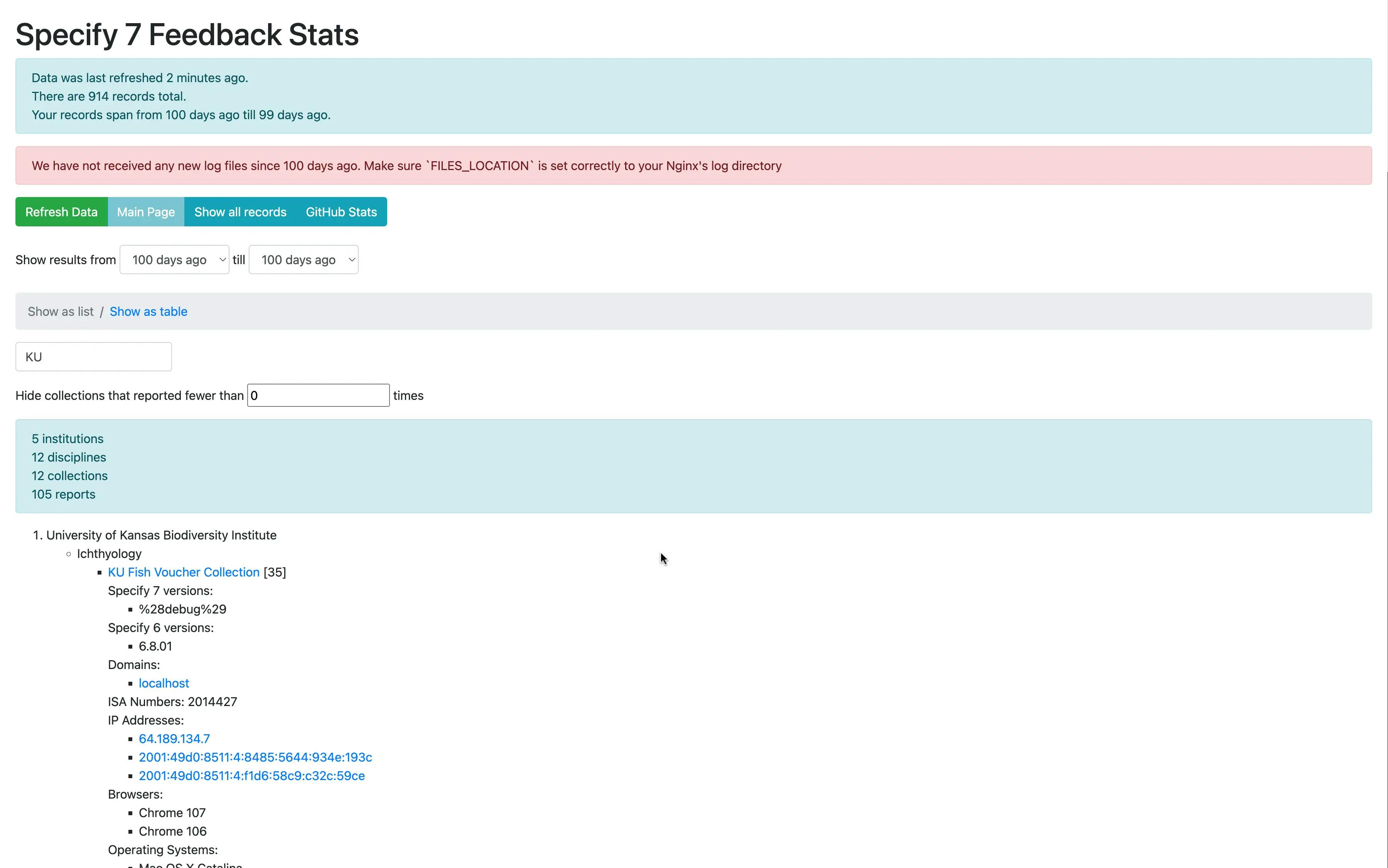Specify 7 Usage Stats visualizer
Internal usage stats explorer
My first project at the first job during college was adding a way to see the usage stats for the Specify 7 application - an open source scientific collection management software.
They already had the code for making Specify 7 ping our server on startup with telemetry information and storing that in a giant text file, but no way to visualize the data.
Main features
- IP Addresses are resolved using ip-api.com to find approximate locations of users
- User agents are parsed to find out browser and operating system versions
- Data can be inspected in list view and table view.
- By default data for the last 100 days is shown, but any range can be selected
- The computed analytics are cached, allowing for instant refresh. Cache is updated daily automatically, but there is also a button to update it manually at any point
- Nginx's NJS was used to create an authentication screen, barring access to anyone who is not part of the Specify GitHub organization. Source code for that
Screenshots



Online demo
Unfortunately, I am not able to provide a live demo URL as the tool is accessible internally only, however, you are free to look at the source code
Technologies used
- PHP
- Chart.js
- Nginx and NJS (for authentication)
- nginx-with-github-auth - an Nginx module I wrote
- Bootstrap
- jQuery
- GitHub APIs
Specify 6 Usage Stats
In parallel with this project, I was tasked with modernizing an existing usage stats visualizer for a separate application.See the results of that project.
Reflecting on the project
When I started this project, I used the technologies I knew best. Among the only new things I had to learn was Chart.js and how to work with GitHub APIs. This made the development go very quick and I had a working prototype within a day.
At the time, that was an effective approach as that way I was able to quickly show results to my team and impress them with, what I though at the time, advanced skills.
However, reflecting on this 4 years later, if I were to do this project again, I would instead adopt an existing solution for visualizing stats, as there are a lot of fabulous options out there (Google Analytics, Mixpanel, Amplitude, Tableau and many others).
Usage stats visualization is a problem that has been solved a thousand times before, and so there was little business value for the company to solve it again, beyond the fact that as a undergraduate student employee, my salary didn't cost the company much, while my enthusiasm was boundless 😊.